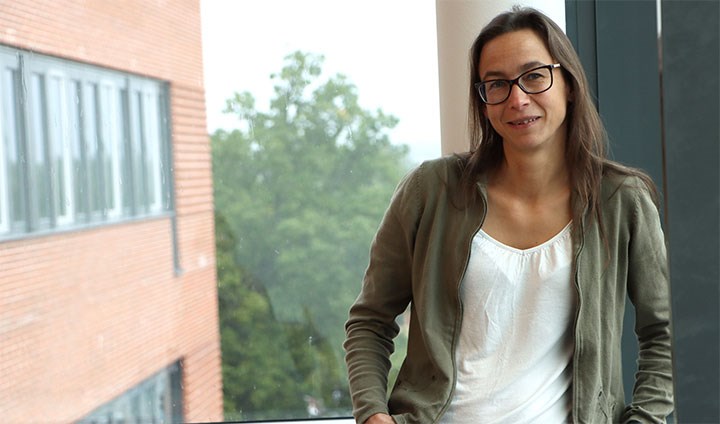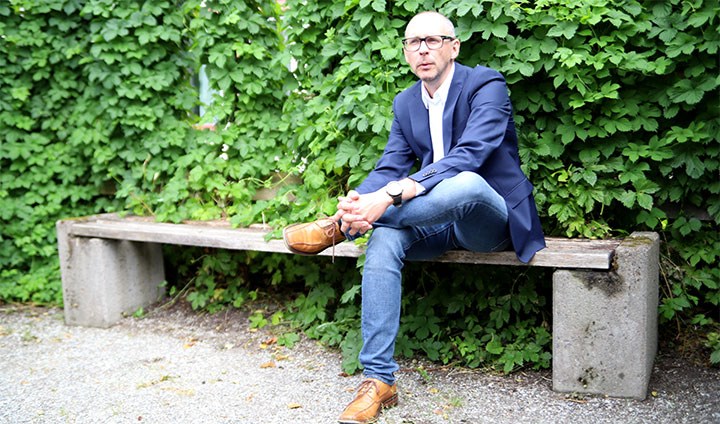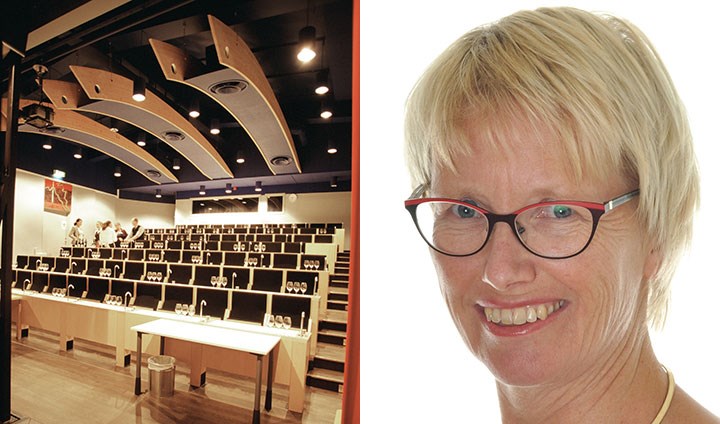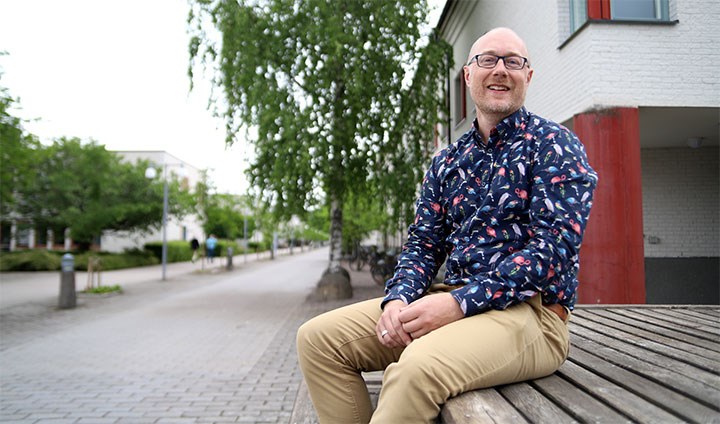When teaching at Örebro University suddenly went digital, and students were no longer on campus, Annika Göran Rodell faced a real challenge. How do you change a practice-based course with an aesthetic methodology, where students usually do experimental work on rendering meals in a studio at RHS in Grythyttan, so that it works online?
“My first thought was, ‘Oh my god, how are we going to set tables without using the utensils that we have in our cupboards here in Grythyttan?’ It’s not going to work.”
She then called Cheryl Akner-Koler, professor at Konstfack (University of Arts, Crafts and Design) for inspiration. Cheryl Akner-Koler contributed to creating the conceptual framework used at RHS.
“With an open mind, we tested various methods on Zoom, made prototypes and simple sketches, along with a Konstfack alumnus who helped us test these ideas. We used materials and utensils which we had at home. It was invigorating when she suddenly said, ‘just imagine that the client is blind.’ It was my lightbulb moment!”
Constructing a quiet composition
The solution was that students had to create a neutral place to work in, like using a white sheet as a background, instead of showing their study room or living room at home.
“A busy background detracts from what you’re doing. Some use virtual backgrounds, but that creates a fluttery image that’s strange when you’re moving around. I think it’s better working authentically, in a more studio-like, neutral surrounding. Tilting your laptop’s screen to show what you’re doing with your hands, like holding different objects, for instance, without the background being a nuisance.”
Annika Göran Rodell also chose to use silence as a method in her teaching.
“When the students showed their creations, they were totally quiet. It’s fascinating and easier to focus when you’re allowed to let things their take time, not just focusing on a face and what they’re saying. Reflecting in this way is quite different.”
The chosen scenario meant that students needed to appreciate the standpoint of a blind client, especially when considering how to describe their compositions. The metaphor emphasises the importance of inclusive design, which is often lacking in the catering business.
“They developed a more colourful language to describe their composition, both descriptively and aesthetically, based on the conceptual framework we’ve developed for the culinary experience. By making use of mood boards, where they set up their own compositions two-dimensionally, everyone could all follow along with their story,” explains Annika Göran Rodell.
Improvising in front of the camera
The semester’s last course was a real challenge. Fifty students – who usually would have constructed a restaurant environment in the Gastro room at Måltidens hus and practised cases of difficult meetings via role-play – were to present their cases remotely. The solution: hire an actor to play out the case.
“We used a whiteboard as a storyboard, so students could improvise various scenarios in front of the camera.”
The story included difficult meetings between both staff and guests and staff and management.
“It was like theatre. How does it feel? Do you see others as a subject, or do you turn yourself off and view your guest as an object? Are you reactive, or are there other things affecting your actions? It’s all about discovering where inside the reaction comes from. An intervention is different all depending on whether it comes from a scared, angry or neutral position.”
Building confidence is essential
According to Annika Göran Rodell, it is all about building confidence and creating a safe room, where students dare to act out freely.
“This worked because I know my students, we’re not an anonymous group. Trust is a prerequisite to do things like this, even remotely.”
Annika Göran Rodell hopes that her methods can inspire other teachers working with case-study and practical elements.
“It is possible to build it as a process. For example, give students a challenge to examine something in their surroundings. Next, let them meet in breakout rooms to report what they’ve examined, then get a new task. Afterwards, they move onto a bigger group or the whole class and recount, perhaps by using an object, film, pictures or body language. It’s possible for digital learning to be full of life and energy if we use all our senses,” she says.
However, developing new teaching methods takes time.
“It’s important to respect our students’ time and not just drop new ideas and methods on them. My advice is to try it yourself, so you know that it works. And brainstorm ideas with colleagues.”
Text: Anna Lorentzon
Photo: Petter Koubek and Hans Lundholm
Translation: Jerry Gray
Annika Göran Rodell’s three tips:
Find a sounding board – a trusted colleague with whom you can try out new ideas or practices.
Dare to leave your comfort zone and test something new – but test on yourself first, students are not guinea pigs.
Use all your senses – it is also possible in Zoom to work with sight, hearing, haptic, the body and improvisation. Limitations only exist in your mind.




